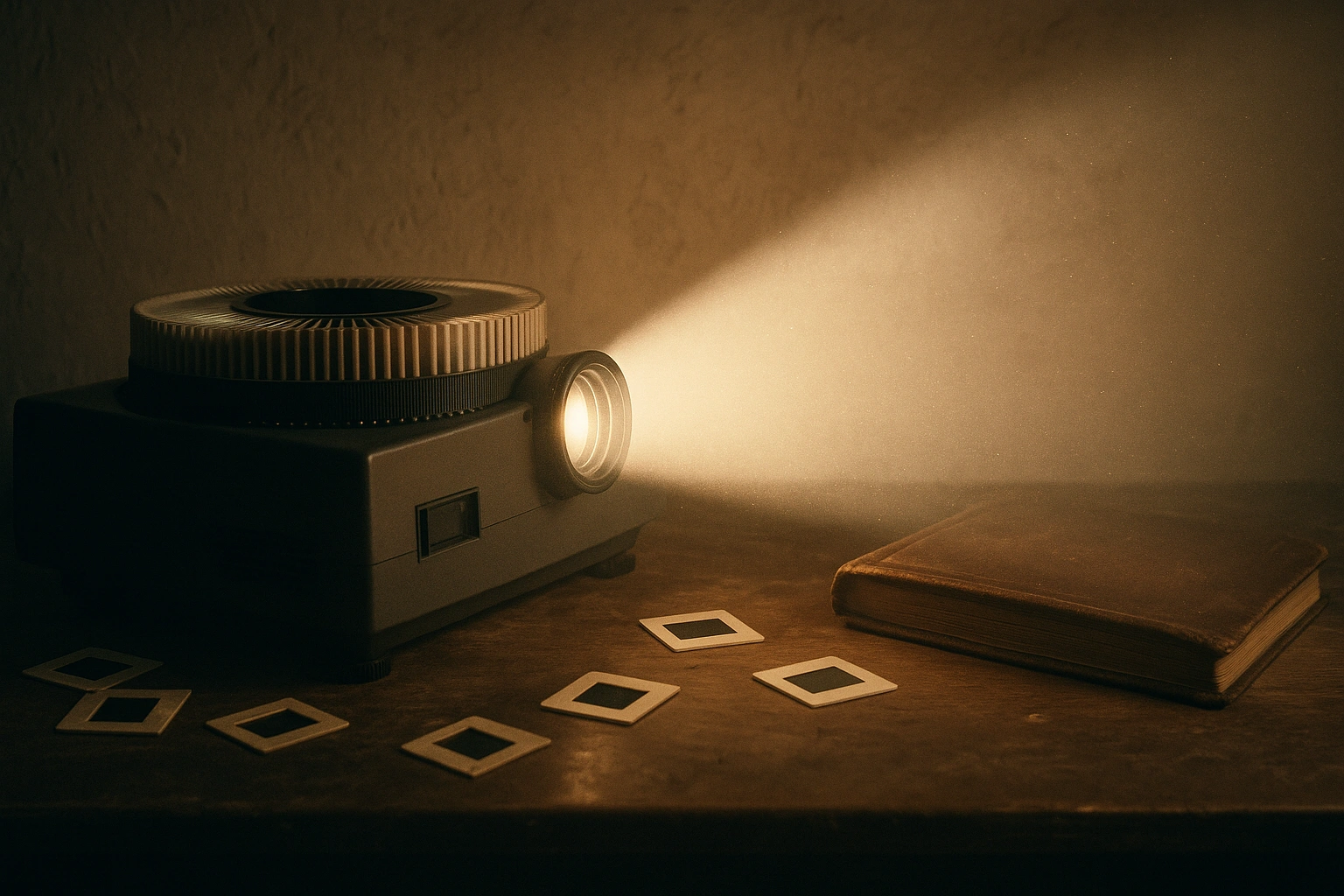Remember dimming the lights, gathering around a carousel tray, and hearing the soft click as the next slide glided into view? Slide projectors were once the undisputed stars of family gatherings, classrooms, and amateur photography clubs. Today, they’re largely relegated to dusty corners and estate‑sale tables—but the magic they created remains a vivid thread in our collective nostalgia.
1. The Ritual of the Carousel
There was something almost ceremonial about slotting in the round tray—up to 80 square frames, each one a frozen moment. You’d hear the reassuring whirr as the mechanism advanced, then a satisfying click! as the next transparency settled into place. It wasn’t just the images on the wall; it was the anticipation in the room, the hush between clicks, the collective gasp or giggle at Grandma’s cat sporting a lampshade hat.
2. Crafting the Perfect Home Movie Night
Before Netflix marathons and YouTube binges, slide nights reigned supreme. Hosts would sift through cardboard slide boxes, carefully choosing a loose narrative: “Our Trip to Aspen” might segue into “Cousin Ricky’s First Steps,” followed by “That Time We Got Lost in Venice.” With each frame frozen at 2×2 inches, storytellers learned to be concise—no rambling pan shots or shaky close‑ups here!
3. The Joy of Handwritten Captions
Peeling open a slide mount often revealed a tiny handwritten note: “Summer ’82,” “Eiffel Tower, 1985,” or “Uncle Joe’s Unexpected Snorkel Mishap.” These scrawls added personality—evidence of the photographer’s humor, nostalgia, or even indecision (“Beach Day???”). More than metadata, captions were love letters: informal, imperfect, and deeply human.
4. Imperfections Were Part of the Fun
Dust specks dancing on the screen; a slip of the slide causing a brief blackout; the occasional jam that required a soft tap and a prayer—these hiccups only made the experience more tactile. Unlike today’s sterile, buffer‑free streaming, slide nights demanded patience and rewarded it with a unique warmth. A tiny scratch on a transparency could cast a flitting sunbeam across a mountain vista, turning a simple landscape into a serendipitous light show.
5. Community and Connection
Photography clubs and local libraries often hosted “slide swap” nights, where hobbyists shared their latest shoots. You’d see nature lovers’ macro shots of butterflies, travelers’ exotic marketplaces in Marrakech, and aspiring astrophotographers’ attempts at capturing Saturn’s rings. Conversations sparked over technique—“Did you use Ektachrome or Kodachrome?”—and everyone left with fresh ideas and new slide mounts to fill.
6. Slide Projectors in Education
Schools embraced carousel projectors for science fairs and history lectures. A biology teacher could magnify leaf venation, while a geography class took virtual trips through the Alps. The large, bright images engaged students in an age before PowerPoint—but instead of canned templates, every projection bore the character of slide film: rich grain, vibrant color shifts, and that distinct filmic glow.
7. The Decline—and Enduring Allure
By the late ’90s, digital projectors and PowerPoint decks eclipsed their analog forebears. Yet vinyl collectors chase rare pressings, and film buffs cherish Super 8 reels—slide collectors and projector enthusiasts have their own revival. Online forums trade tips on cleaning lenses, restoring ancient lamps, and where to find fresh batches of 35 mm E‑6 film.
8. Bringing Slide Nights Back (Casually)
If you’re feeling a pang of nostalgia, you don’t need a full AV setup. A simple table‑top slide viewer and a handful of your grandparents’ slides can spark stories that flood living rooms with laughter. Or try a “digital slide night”: scan a few favorite transparencies, project them with a modern projector, and let conversations flow—no carousel required.
Slide projectors may no longer be the centerpiece of gatherings, but their legacy lives on in our memories: the soft whirr, the grain‑kissed images, and the shared delight in pausing time—one frame at a time. So next time you uncover that dusty tray of slides, take a moment to flip through each tiny window. You might just rediscover your own lost art of storytelling.

